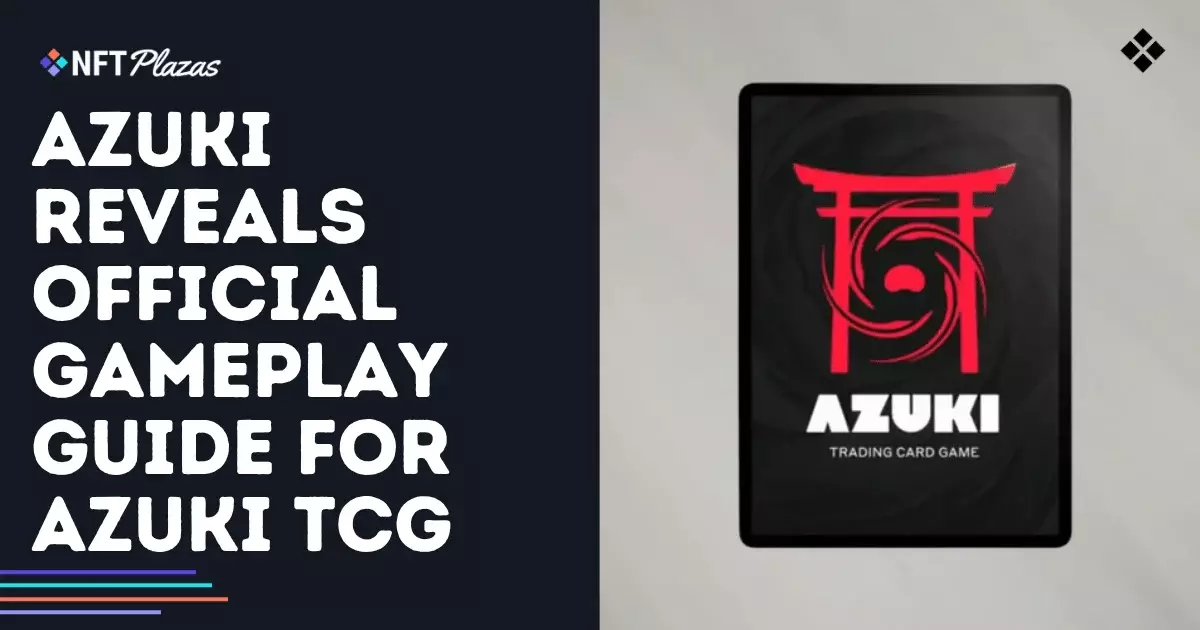The recent unveiling of Azuki’s official gameplay guide for its upcoming trading card game (TCG) appears to promise a revolutionary step in blockchain-integrated gaming. Yet, beneath the glossy surface lies a complex web of questionable assumptions, overhyped technology, and ideological contradictions. What Azuki presents as a convergence of gaming, art, and decentralized ownership may ultimately reveal itself as an overreach, symptomatic of the crypto world’s persistent disconnect from genuine entertainment value.
Unlike traditional card games built on simple rules and engaging gameplay, Azuki TCG appears to prioritize the technological and branding aspects, at the expense of strategic depth or player engagement. The emphasis on blockchain elements—such as resource management through IKZ cards and faction-based decks—seems to be more about showcasing blockchain utility than creating a compelling gaming experience. The game mechanics, while detailed, seem to serve as a façade for what is ultimately an elaborate platform to promote Azuki’s digital art and the broader Web3 ecosystem.
Overreliance on Blockchain: A Distraction from Gameplay
Examining the guide closely, one notices the conspicuous absence of meaningful integration between the game mechanics and the blockchain components. The game’s resource system, led by IKZ cards, operates similarly to traditional mana or energy systems found in conventional card games. Yet, it is presented within a narrative of decentralization and digital ownership that raises more questions than answers.
If the blockchain element is peripheral to core gameplay, it risks being a superficial feature meant to attract a niche audience obsessed with crypto speculation rather than genuine gamers. This disconnect suggests that Azuki’s primary goal is brand expansion rather than crafting an entertaining product. The lack of concrete plans for integrating digital assets or tokens within the gameplay further emphasizes that blockchain may serve more as a marketing gimmick than an actual innovative mechanic.
Tokenization and Ownership—A Promising Idea or a Speculative Trap?
Web3 enthusiasts tout NFT-based games as revolutionizing ownership and monetization. However, Azuki’s approach, as revealed by the guide, casts doubt on whether this vision is feasible in a practical sense. The game’s design does not elaborate on how digital assets—like rare cards or decks—will be secured on the blockchain or whether players can truly own, trade, or profit from these assets outside of the platform.
This ambiguity exposes a core flaw: many NFT games overhype their potential but underdeliver on tangible benefits. Instead of empowering players with real ownership and control, Azuki’s model risks entrenching a speculative environment—where the primary value lies in appreciating or trading digital art rather than enjoying the gameplay. Recent history has shown that such models often inspire bubble-like behavior, shifting focus from entertainment to financial speculation.
The Irony of Promoting a “Structured” Card Game in a Digital Age
One of the most striking aspects of Azuki’s TCG is its traditional game structure—turn-based, faction-based decks, clear win conditions—yet it’s embedded in a digital format that is supposed to be revolutionary. Paradoxically, this reveals an outdated approach masked behind a digital veneer. In an era when innovative game design often seeks fluidity, multiplayer interaction, and swift gameplay, Azuki’s adherence to a structured, somewhat rigid format may hinder its appeal.
Furthermore, the hype about a “first official tournament” signals ambition but also exposes the thinness of the core product. If the game mechanics do not significantly innovate or differentiate themselves from existing TCGs, then the entire project relies heavily on brand recognition and blockchain-driven novelty—two factors that have proven insufficient to sustain fascination over time.
Critical Perspective on the Future of NFT Gaming
Given my skeptical stance, it’s clear that Azuki’s foray into gaming exemplifies many of the pitfalls common in the NFT and blockchain gaming sector. While the gaming industry constantly seeks genuine innovation, blockchain integration often distracts from and dilutes the essence of good game design. By framing their project within a Web3 narrative, Azuki risks alienating traditional gamers who value engaging mechanics and meaningful experiences over gimmicks and speculative assets.
The broader lesson is that true gaming innovation must prioritize the player experience above all else. Incorporating blockchain should serve to enhance, not overshadow, core gameplay. Until these projects genuinely demonstrate that ownership, decentralization, and gameplay are harmoniously integrated, they will remain, at best, superficial experiments and, at worst, cautionary tales of overhyped promises. Azuki’s hype-driven approach, while exciting to some, ultimately undermines its credibility as a serious contender within the gaming landscape, revealing the fundamental flaw of treating technology as a substitute for substance.

